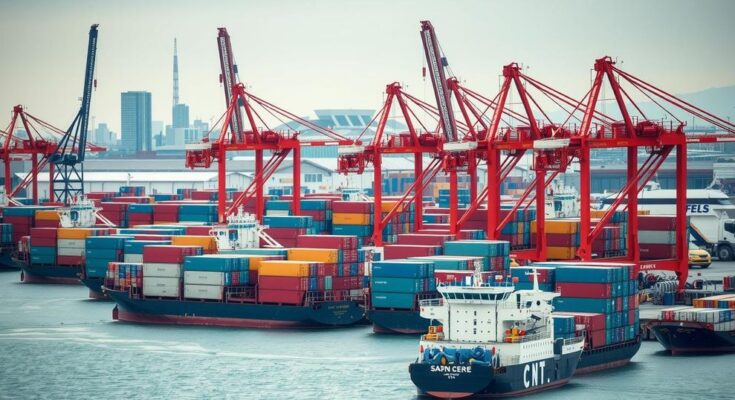President Trump announced a 25% tariff on imports from Canada and Mexico, effective February 1, citing immigration and drug trafficking as key motivations. This decision is part of his “America First” strategy, mandating a review of trade practices and deficits. The tariffs are anticipated to affect various sectors, steering the U.S. toward reassessing its international trade dynamics and agreements, particularly concerning China. An executive order has tasked various cabinet members with investigating trade issues and proposing measures to address national security implications.
In a significant trade announcement, President Donald Trump declared a 25% tariff on imports from Canada and Mexico, set to take effect on February 1. This move aligns with his “America First” trade policy, alongside an executive directive for government agencies to assess trade deficits and evaluate potential trade agreements by April. The United States currently faces a trade deficit of over $150 billion with Mexico and $67 billion with Canada, prompting concerns about economic impacts.
During a press conversation at the Oval Office, President Trump remarked, “We are thinking in terms of 25% on Mexico and Canada because they are allowing vast numbers of people—Canada is a very bad abuser also—to come in and fentanyl to come in. We will do it February 1st.” This statement underscores his administration’s focus on immigration and drug trafficking issues as a rationale behind the tariffs.
Analysis from the Peterson Institute indicates that machinery, electronics, and various sectors may suffer from these tariffs. While such tariffs were initially aimed at addressing trade concerns with China, the intention here appears to intertwine economic goals with efforts to curb illegal immigration and drug flow. Moreover, a comprehensive review concerning America’s trade dynamics is anticipated, under Trump’s “America First Trade Policy” order.
In his executive order, President Trump initiated a wide-ranging examination of the issues surrounding the United States’ substantial trade deficits. He instructed the Secretary of Commerce to investigate the consequences of these deficits on national security and propose necessary measures, including potential tariffs. Counteracting currency manipulation and discriminatory tax practices by foreign entities were also highlighted for further exploration.
The order further empowers the United States Trade Representative (USTR) to identify unfair practices in international trade, particularly regarding the US-Mexico-Canada Agreement, and to pursue new bilateral agreements for enhanced market access. Regarding China, the USTR is tasked with reviewing trade agreements and addressing intellectual property issues to ensure reciprocal treatment.
In an overarching framework, Trump also tasked his administration with evaluating the state of America’s industrial base, emphasizing the importance of maintaining the country’s technological superiority against global competitors. This includes modifying export controls relevant to national security interests and addressing potential loopholes that may permit strategic goods to fall into the hands of adversaries.
Overall, while the immediate impact of these tariffs primarily concerns Canada and Mexico, President Trump’s expansive executive order indicates a potential shift in international trade relations. The assessment of various sectors and practices suggests that forthcoming actions could redefine America’s position within the global economic landscape.
President Trump’s announcement of a 25% tariff on imports from Canada and Mexico reflects a significant step in his “America First” trade policy. By prioritizing national security and economic evaluations, the administration seeks to tackle persistent trade deficits while addressing immigration concerns. The executive order outlines a comprehensive approach to reviewing trade practices and strategizing future agreements, underscoring a broader intention to reset the international trading system. As Trump’s directives are enacted, the potential for restructuring trade relations may extend beyond North America, influencing global commerce.
Original Source: www.hindustantimes.com




